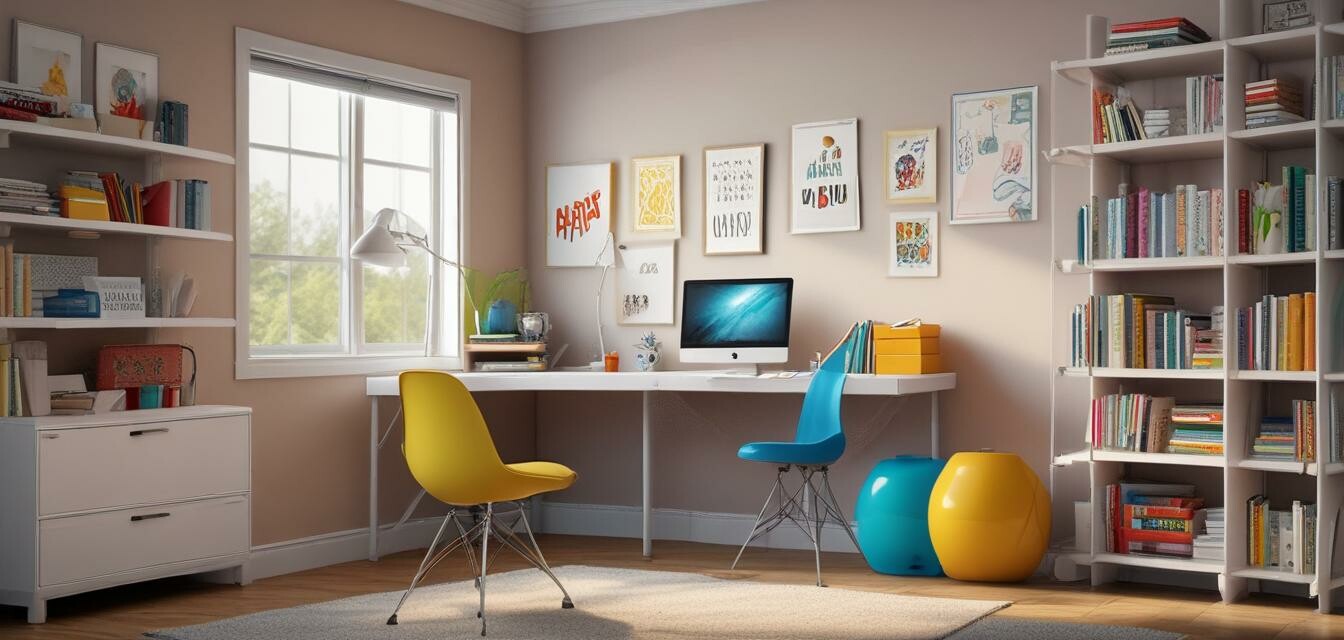
How to Create a Productive Study Space for Children
Key takeaways
- A well-designed study space enhances focus and learning.
- Ergonomic furniture is crucial for comfort and productivity.
- Incorporate good lighting and minimal distractions.
- Personalize the space to motivate and inspire.
Creating a productive study space for children involves careful consideration of various elements that contribute to focused learning. An effective setup goes beyond merely placing a desk and chair in a room; it encompasses the design, layout, and overall environment. This guide will walk you through several tips and tricks to craft a functional and inspiring study area. Let’s dive into the essential components!
Choosing the right location
The location of a study space can greatly influence a child's ability to concentrate. Here are some tips to select the best spot:
- Find a quiet area in the house, away from noise and distractions.
- Ensure the location has adequate natural light to create a bright environment.
- Consider proximity to the kitchen or other communal areas for easy access to supplies.
Furniture essentials
The choice of furniture in a study space is crucial for productivity. Below are key furniture elements you should consider:
| Furniture Type | Benefits |
|---|---|
| Ergonomic desk | Supports good posture, reducing fatigue during long study sessions. |
| Comfortable chair | Promotes focus and comfort, allowing longer study periods. |
| Bookshelf | Keeps materials organized and easily accessible. |
| Storage solutions | Helps to minimize clutter and maintains cleanliness. |
Creating an inspiring atmosphere
To keep children motivated, the study space should be inviting and inspire creativity. Here are some ways to enhance the atmosphere:
- Add colorful decor items that reflect the child's interests.
- Incorporate motivational quotes and artwork on the walls.
- Use decorative organization bins for supplies to keep things tidy.
Lighting considerations
Good lighting is critical in a study space. It can prevent headaches and eye strain, enhancing focus. Implement the following tips:
- Utilize a mix of natural light and artificial lighting.
- Install adjustable desk lamps for targeted task lighting.
- Avoid harsh fluorescent lighting that can cause discomfort.
Minimal distractions
To maintain focus, limit distractions in the study area. Here are some tips:
- Keep electronic devices like TVs away from the study space.
- Use noise-canceling headphones if background noise is unavoidable.
- Establish clear study hours to build a routine and minimize interruptions.
Making it personal
A personalized study space can significantly boost motivation. Here’s how you can personalize it:
- Let children choose their color schemes or themes.
- Encourage them to display their achievements and artwork.
- Include items that spark inspiration, such as plants or vision boards.
Tips for enhancing productivity
- Establish a consistent daily routine to create a productive mindset.
- Incorporate breaks into study sessions to prevent mental fatigue.
- Evaluate and adjust the setup periodically to meet evolving needs.
Conclusion
Creating a productive study space for children is an investment in their education and well-being. By carefully considering elements such as location, furniture, lighting, and personalization, you can develop a space that not only fosters concentration but also inspires creativity. For more tips on customizing your home office or enhancing other areas in your workspace, check out our DIY Tips and Tricks.